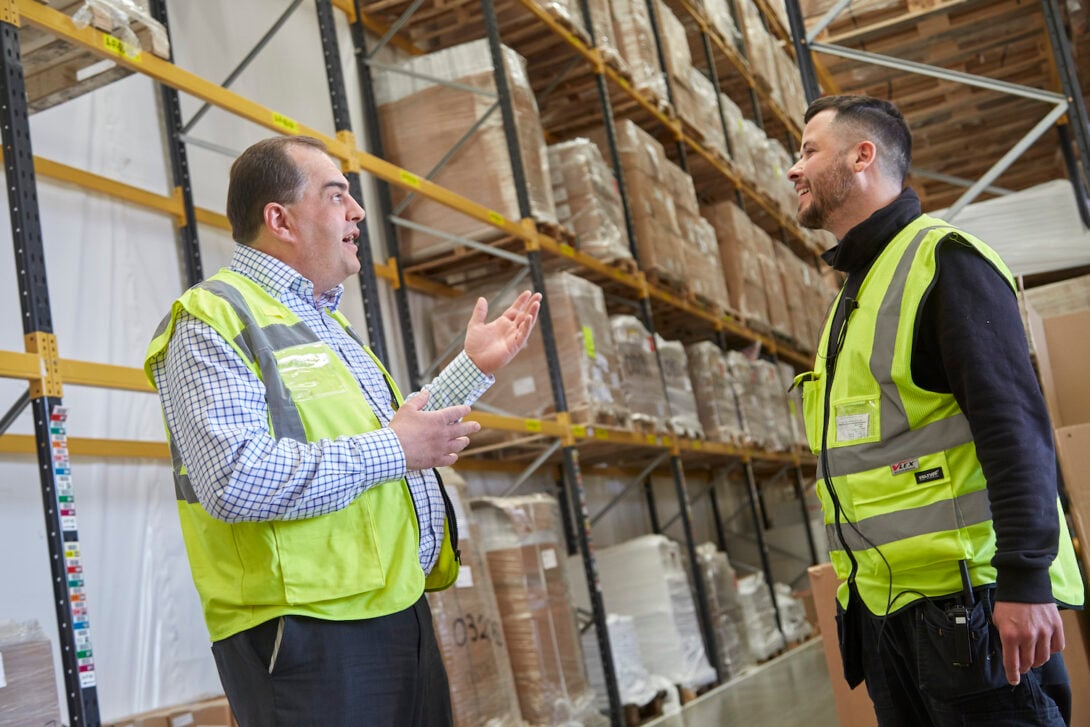The 8 Wastes of Lean Manufacturing: How to Identify and Remove Waste Within Your Organisation
 By
Rich Sutherland
·
4 minute read
By
Rich Sutherland
·
4 minute read

According to research carried out by the Government, in 2020 the UK’s commercial and industrial sectors generated around 33.8 million tonnes of waste. Though this is lower than the 43.9 million tonnes generated in 2018, it’s clear that there’s a lot of opportunity for manufacturing companies to become more sustainable through strategic reduction of physical waste.
However, there are many additional types of waste when it comes to manufacturing, which is why continuous improvement is so crucial to this fast-paced and ever-changing industry. CI involves taking small steps on a regular basis, which over time will greatly improve safety, product quality and employee engagement whilst reducing the amount of waste generated by your business.
So the question is, what are the 8 types of waste and how can you help your teams to remember, identify and reduce them? Read on to discover what you need to look out for and how the Lean and visual management specialists at Clarity can support you.
Tim Woods and the 8 wastes of Lean
There’s a very easy way to remember the eight types of waste that can be present in a manufacturing facility, and it’s called TIM WOODS. Each letter of this name represents a common type of waste that should be identified and reduced throughout your value stream:
T: Transport
The moving of products, people and information requires some form of transportation. This does of course include the most obvious examples of physical transportation, such as your forklifts and fleet of distribution vehicles, but you also need to analyse the movement of staff within your premises and how information is conveyed. All instances of superfluous transportation must be identified and removed, as this will greatly speed up processes and also help to prevent damage to products caused by excessive transportation.
I: Inventory
It can be very easy to create inventory waste, which is when spare parts, raw materials or even documentation are stored ahead of requirements and take up unnecessary space. By instead purchasing materials only when they are actually required, you can optimise the space within your manufacturing facility and remove the costs associated with excess inventory.
M: Motion
There’s a lot of motion involved in manufacturing, yet many actions will be unnecessary and could even be detrimental to workflow and wellbeing. Common examples are bending, turning, reaching and lifting, which slow down your processes and can potentially lead to fatigue and even accidents. There will of course be some motion required for each task, but by assessing your workplace design and storage systems you can remove multiple instances of excess motion. This will greatly speed up production and help you to run a more profitable business.
W: Waiting
Though patience is a virtue, waiting really shouldn’t be commonplace in a factory. If your employees ever have to wait for something in order to fulfil their duties, there will surely be a way to reduce or even remove this wasted time. A key method of achieving this is through visual management assets such as 5S cuboids, shadow boards, cleaning stations and other products that facilitate fast and efficient working.
O: Over-production
The manufacturing of more than is immediately required results in stockpiling of products and simply uses up materials, labour, energy and capital. It is essential to balance the volume you produce with current market demand to ensure you are not creating other waste by over-production, such as excess inventory. Over-production can also result in other wastes being increased, such as transport, as finished goods are being transported to offsite storage locations due to filling onsite storage space to capacity.
O: Over-processing
Ensuring a top-quality product is crucial but sometimes this can lead to over-processing, which often takes the form of tighter tolerances and higher grade materials than required. This type of waste reduces productivity and affects your profitability, so it’s important to check that your products are being processed in a suitable way.
D: Defects
Defects are when a product doesn’t meet the expectations or specification of the customer, which in turn can lead to excess inventory due to returned items and reduced sales. Any defects must be fixed at their source, which could involve physical parts being reworked, repaired or replaced, plus it may include rectifying mistakes in documentation caused by communication barriers.
S: Skills
Your employees are your greatest asset, so it’s crucial that you give them everything they need to deliver their best work possible. Skills development is at the heart of this ethos, which can be achieved through bespoke training, workshops, our Operational Excellence Academy, and giving them the right kind of visual management tools that will improve employee engagement, efficiency, communication and production rates.
Download our free brochures
Tackling the eight wastes may sound like an enormous challenge, which is why we’ve created a range of resources to help you simplify the process. Our free brochure that shares 10 visual management tips is a great place to start, as it shows you how to locate instances of waste and apply VM tools to reduce or even eliminate them at the source. We’ve also just launched a brand new brochure that introduces our visual factory fit out service, which explains how our Lean specialists can help your manufacturing company to achieve world-class status.
Explore our Lean workshops
Clarity provides a range of workshops that promote waste reduction and sustainability. Make sure to take a look at our workshops on Lean Layout, which will help you to carry out effective reviews of your physical workplace, and Lean Leadership, which is designed so that your management teams have everything they need to embed a company culture of Standard Work across the board.
We also recommend our Practical Problem Solving workshops, as their role is to support you in identifying the root cause of waste and create long-term solutions for a more sustainable factory.
Reduce manufacturing waste with Clarity
The Lean and visual management specialists at Clarity are ready to help you minimise manufacturing waste through consultancy, training and bespoke visual management products. To get started, contact our team on +44 (0)1482 296451 or fill in our contact form to book your free initial consultation.
